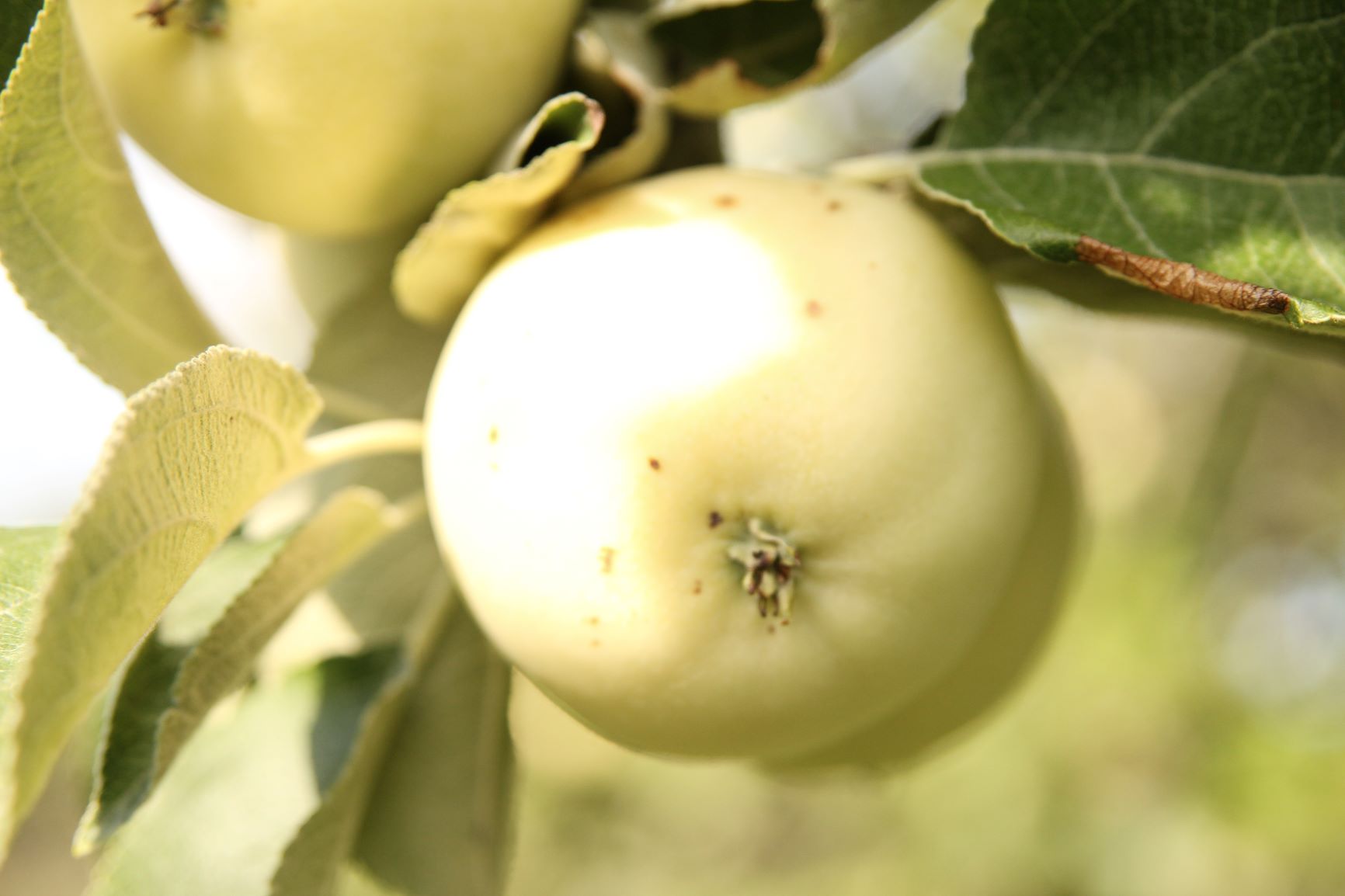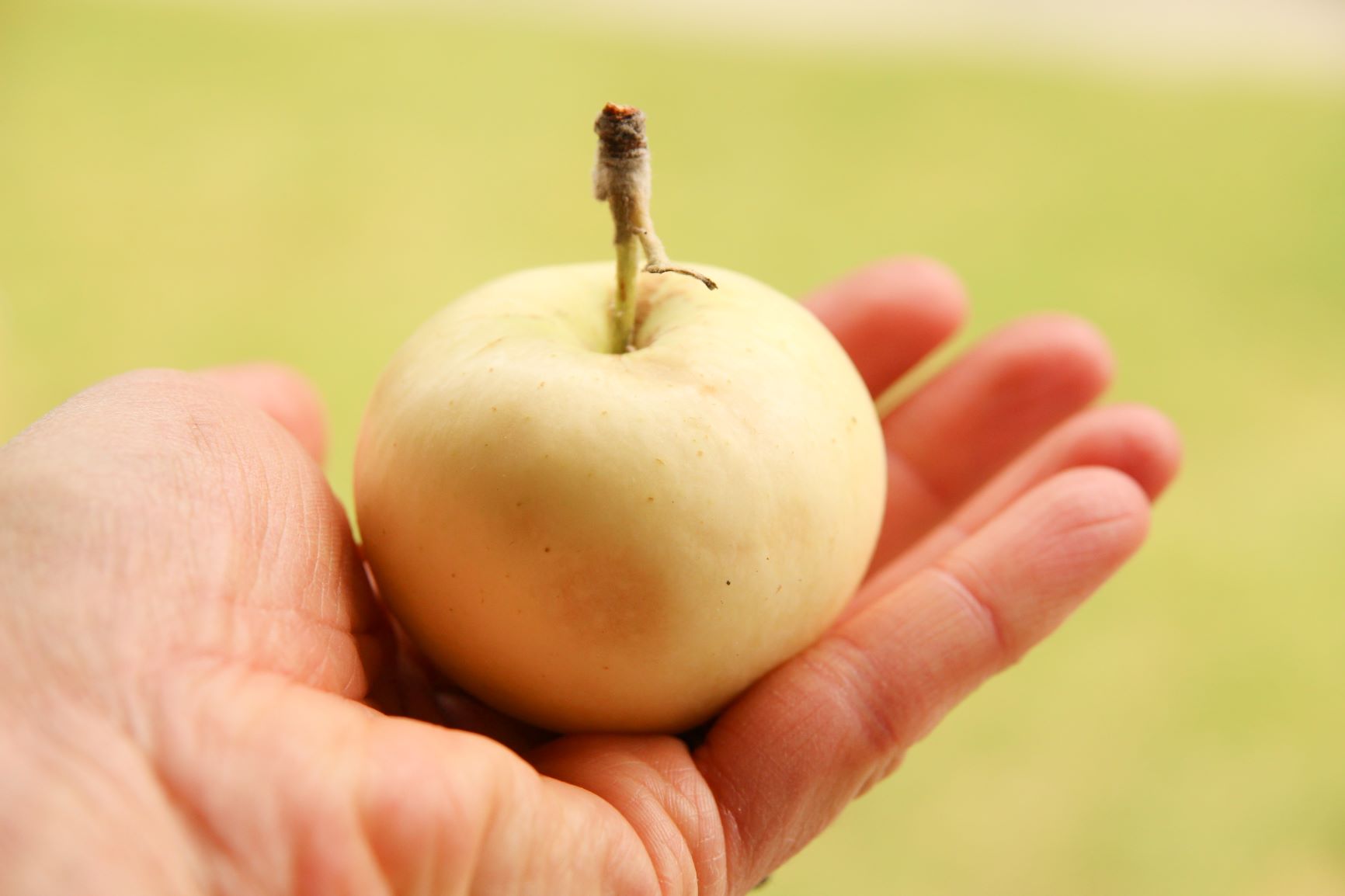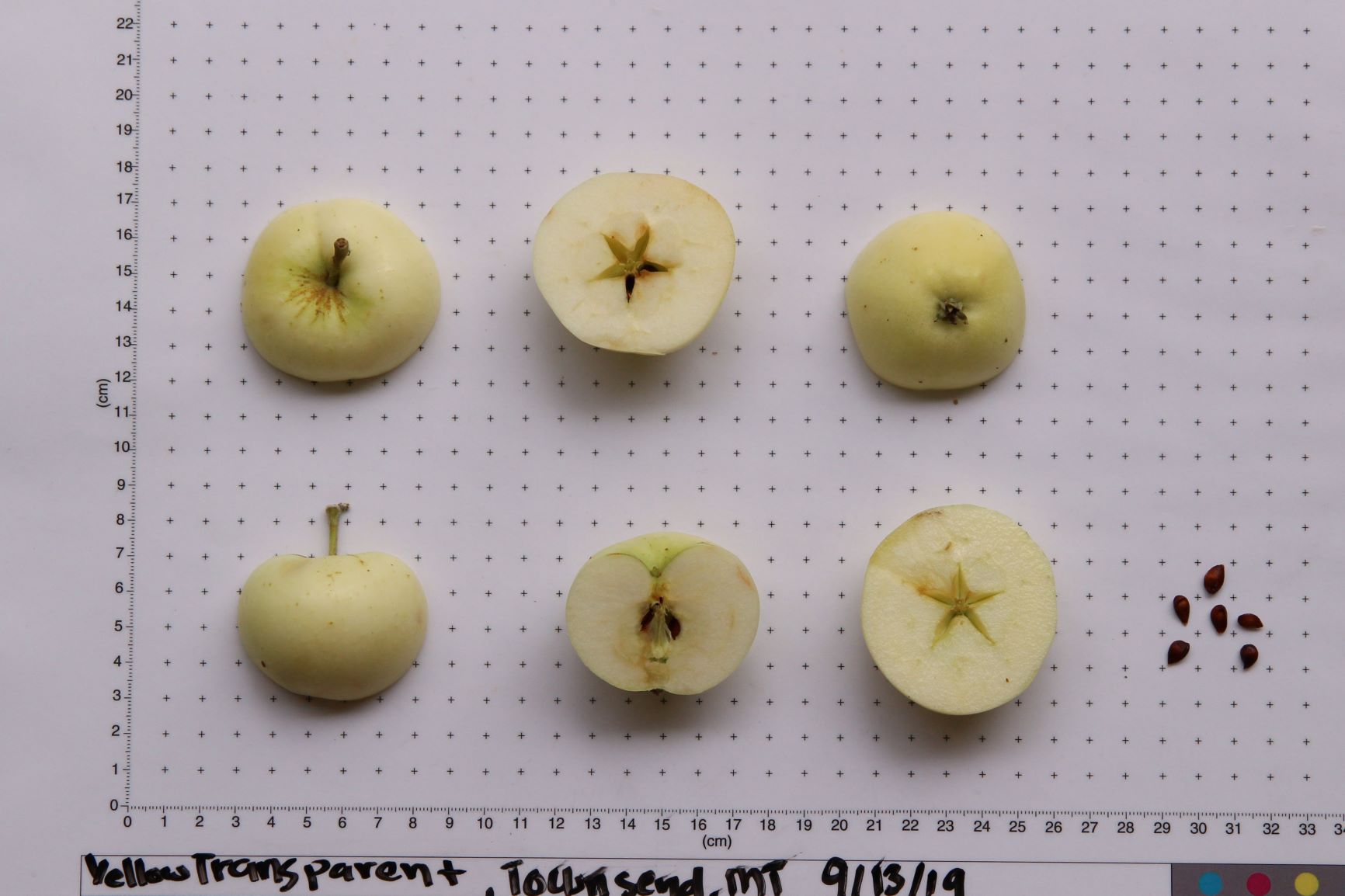Yellow Transparent
Fruit Description
Size: Small to medium.
Shape: Round to oblong, sometimes flat at the ends. Typically irregular, distinctly ribbed.
Skin: Nearly translucent pale yellow or pale yellow green to nearly white. Small green or russetted dots. Waxy.
Stalk (stem) and Cavity: Stem medium to long, thick. Cavity acute or obtuse, meduim to deep, sometimes russetted.
Basin: Shallow, narrow, wrinkled or furrowed.
Calyx (Eye): Closed. Lobes large, erect convergent or reflexed.
Core (Vertical): Calyx tube conical, stamens marginal. Core lines clasping.
Carpels and Axial Sac (Transverse): Axile open or abaxile, Carpels, large, long, elliptical or lanceleoate.
Seeds: Wide, flat, obtuse, dark brown.
Flesh: White, firm when ripe, mealy when over ripe, easily bruised.
Flavor: Sprightly subacid, slight aroma, moderate flavor.

Additional Notes
Synonyms: 'White Transparent', 'Glass Apple', 'Russian Transparent', 'Swoksnoi schtosi', 'Gov. List No. 334', 'Papirovka' and many, many more!
First Recorded: Western Europe mid-1800s, U.S. 1870
Origin: Russia or Baltic region
Bloom time: Mid
Harvest: Early
Use: Culinary, fresh eating, early season apple
Storage: Short
Disease: Very susceptible to fire blight
Tree: Bears fruit on short spurs attached to stout branches. Vigorous tree of medium size.
Parentage: Unknown
Frequency in Montana Orchards based on DNA testing: Medium
Look alikes: 'Lodi'
History
The 'Yellow Transparent' was one of several apples imported to the U.S. from Russia in 1870 to supply the frontier with cold hardy apples. It became popular with home growers for its ability to grow nearly anywhere, resistance to many diseases, and consistent cropping from year to year. It has fallen out of favor as it has a short shelf-life and is best used for culinary purposes, particularly, for sauce.
In Montana, it was grown commonly by homesteaders and listed as one of several varieties inspected in the First District (Dawson, Carbon, Rosebud, Yellowstone and Sweet Grass counties) in 1901. It is commonly referred to by old-timers as the "", and many heritage trees still exist across Montana; however, they are susceptible to fire blight and often have several strikes.

References
Bunker, J. (2019). Apples and the Art of Detection.
FruitID.com, "White Transparent". Viewed online March 2, 2021. https://www.fruitid.com/#view/846
Hedrick, U. P. (1922). Cyclopedia of hardy fruits. New York: The Macmillan company.
Montana State Board of Horticulture. Second Biennial Report of the Montana State Board of Horticulture. 1901-1902.
National Fruit Collection. "White Transparent". Viewed online March 2, 2021. http://www.nationalfruitcollection.org.uk/full2.php?id=6741&&fruit=apple


